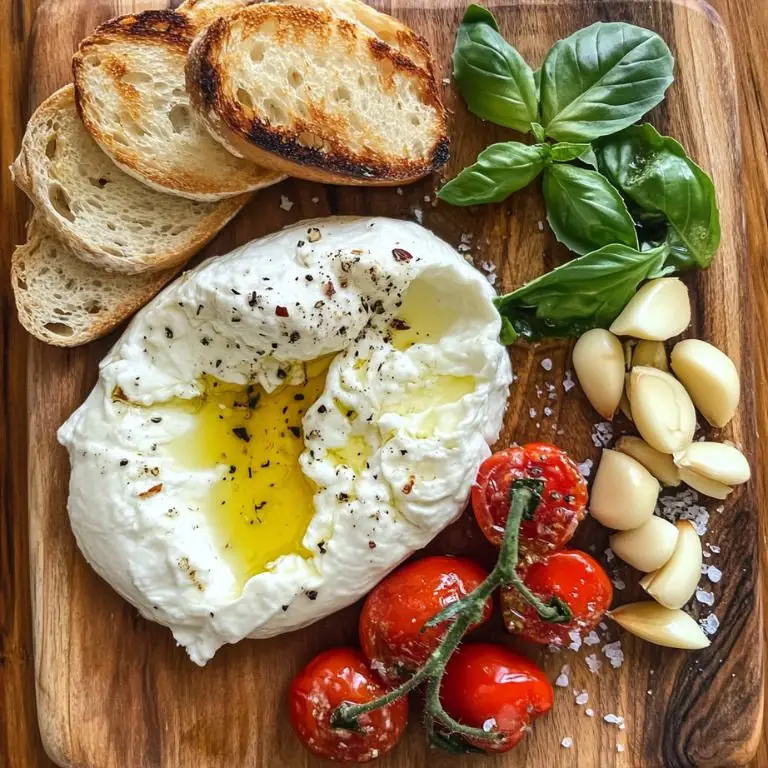If you've ever cracked open a ball of burrata cheese and watched that dreamy, creamy center spill out like cheese lava, you know it's a moment worth recreating. Burrata isn’t just a cheese—it’s an experience. Making burrata at home might sound like a project for expert cheesemongers, but it’s surprisingly doable with a little patience and the right ingredients. Whether you’re a cheese lover hunting for your next homemade cheese adventure or someone looking to elevate a weekend brunch, this guide will walk you through how to make burrata cheese at home—step by step.
Burrata Cheese
Prep Time 20 minutes mins
Cook Time 30 minutes mins
Total Time 50 minutes mins
Course Appetizer, Side Dish
Cuisine Italian
Servings 4 medium burrata balls
Large stainless steel pot (avoid aluminum—it reacts with acid)
Cooking thermometer (a must for precision)
Slotted spoon or skimmer
Long knife for curd cutting
Cheesecloth or muslin
Colander
Bowls for shaping and mixing
Microwave-safe bowl (for quick curd heating) or hot water bath
Optional: gloves for hand-stretching the curd if it gets hot
- 1 gallon whole milk preferably not ultra-pasteurized
- 1/4 teaspoon liquid rennet or 1/4 rennet tablet, dissolved in 1 tablespoon cool water
- 1 1/2 teaspoons citric acid dissolved in 1/4 cup cool water
- 1/2 teaspoon kosher salt
- 1 cup heavy cream the richer, the better
- Optional: add-ins for flavor like roasted garlic or herbs if you're going for a garlic cheese twist
Warm the Milk
Pour the milk into your pot and gently heat it to 90°F. Stir in the dissolved citric acid.
Add Rennet and Rest
Stir in the rennet, then stop stirring and let it sit undisturbed for 5–10 minutes. You should see the curd start to set.
Cut and Cook the Curd
Slice the curd into 1-inch cubes and slowly heat it to 105°F, stirring gently to keep it from clumping.
Drain and Stretch
Using a slotted spoon, transfer curds to a cheesecloth-lined colander. Drain for about 5–10 minutes. Save the whey—it’s great in bread dough or cheese bread recipes!
Make the Mozzarella Shell
Microwave the curds for 30 seconds (or dip them in hot whey) to soften. Knead and stretch them until smooth and elastic. This is your mozzarella “shell.”
Prepare the Creamy Filling
Mix torn bits of leftover curd with heavy cream and a pinch of salt. This is the “stracciatella” filling that gives burrata its signature creamy cheese sauce interior.
Assemble the Burrata
Flatten a mozzarella ball into a disk, place a spoonful of the cream mixture in the center, and carefully wrap the edges up and around to seal.
Chill and Serve
Place your finished burrata in a bowl of ice water to firm it up. It’s best eaten fresh but can be stored in brine in the fridge for a day or two.
What to Serve with Burrata?
Fresh burrata shines on its own, but it’s also incredibly versatile. Serve it on toasted sourdough with olive oil and sea salt, or pair it with roasted tomatoes, grilled peaches, or a bright herb salad. It's a decadent surprise on top of cheese bread, and next-level when added to a baked mac and cheese recipe or melted gently over warm pasta. Try serving it with roasted garlic, a drizzle of balsamic glaze, or over crusty bread with sharp cheddar for contrast.
FAQs
1. Can I use low-fat milk?
Not recommended. For the creamiest results, stick with whole milk. Burrata is all about that luscious texture, which needs fat.
2. What’s the difference between burrata and mozzarella?
Mozzarella is the outer shell of burrata. Inside, it’s filled with stracciatella—a mix of cream and shredded mozzarella curd.
3. Can I make burrata if I’ve made other cheeses like ricotta or mozzarella?
Yes! If you've worked with curds before, burrata is a great next step. The key is stretching the mozzarella just enough to wrap around that luscious filling.
4. How long does homemade burrata last?
Fresh is best. Eat it within 1–2 days for optimal texture and flavor. Store it in a light brine or fresh water in the fridge.
